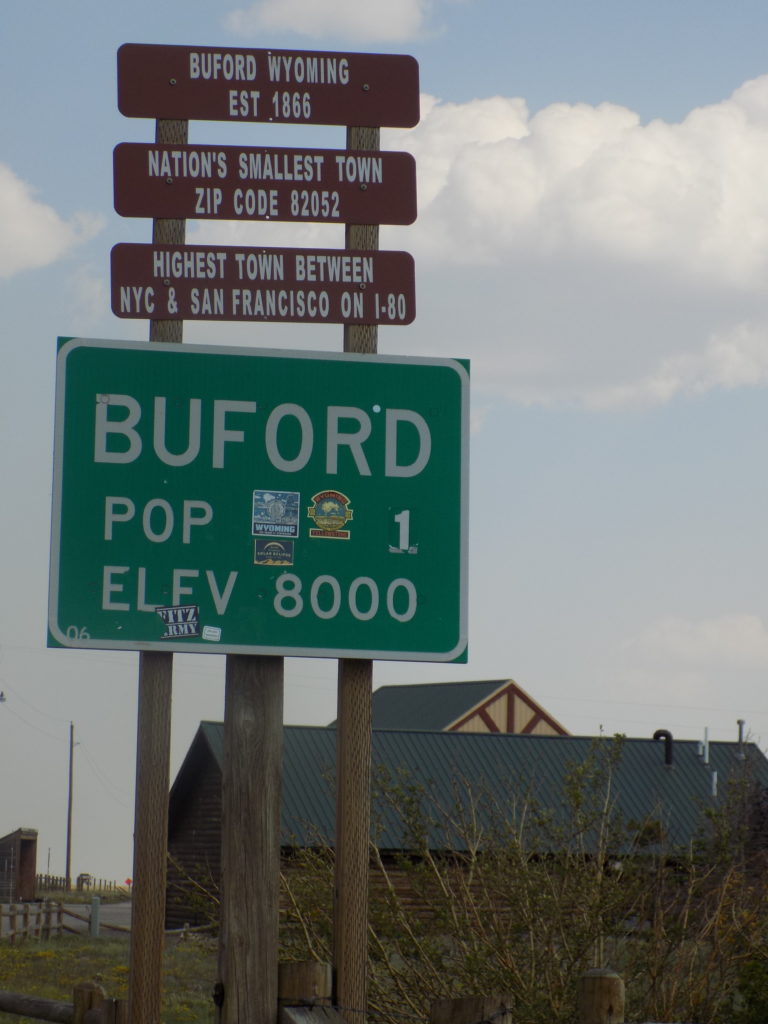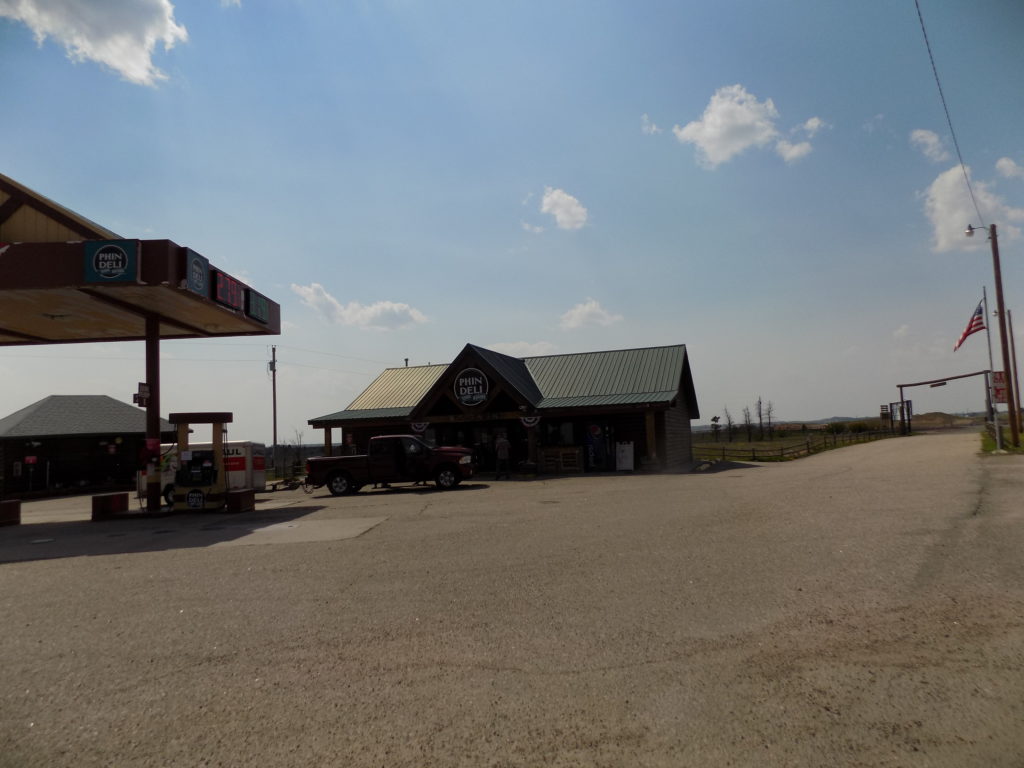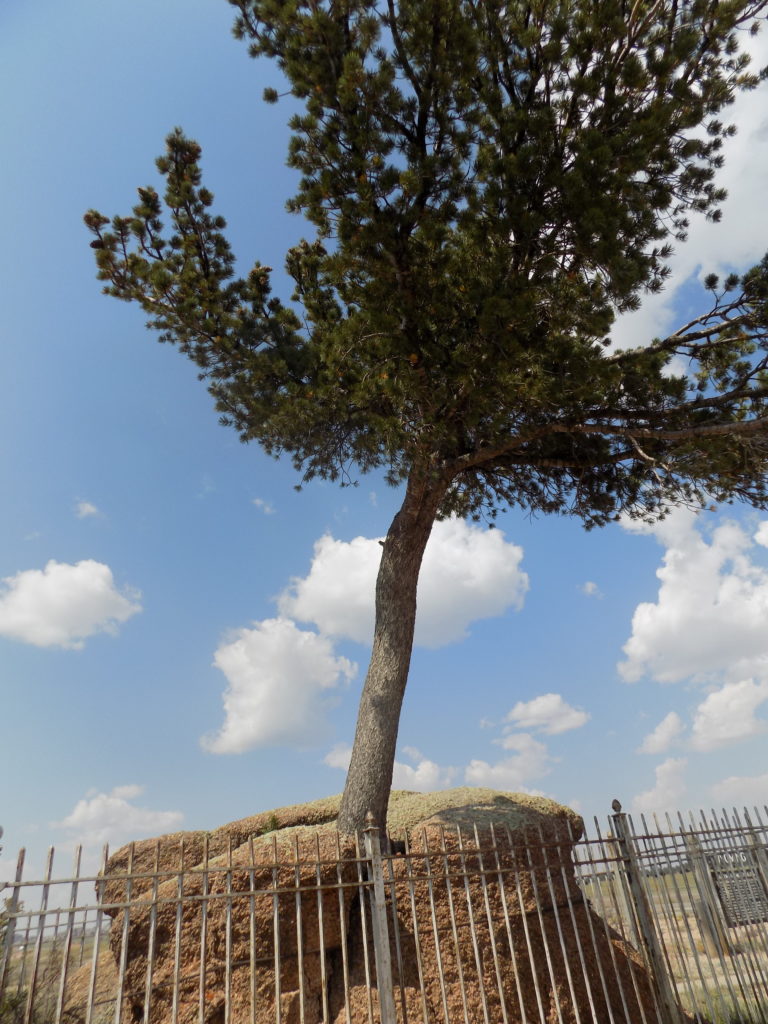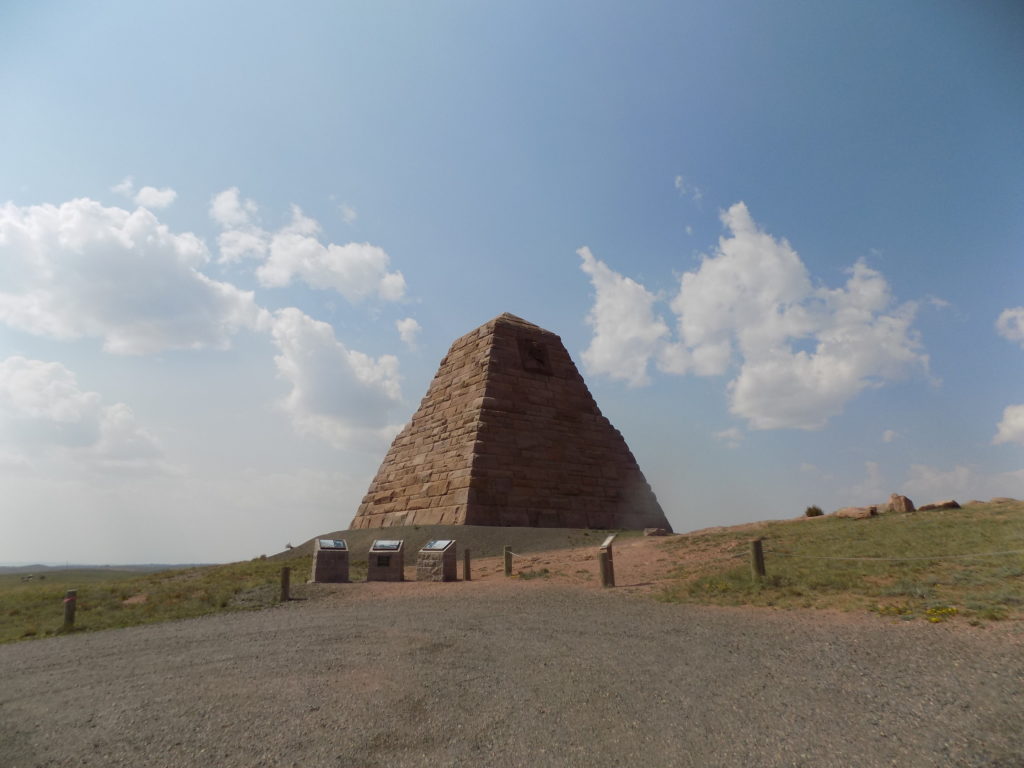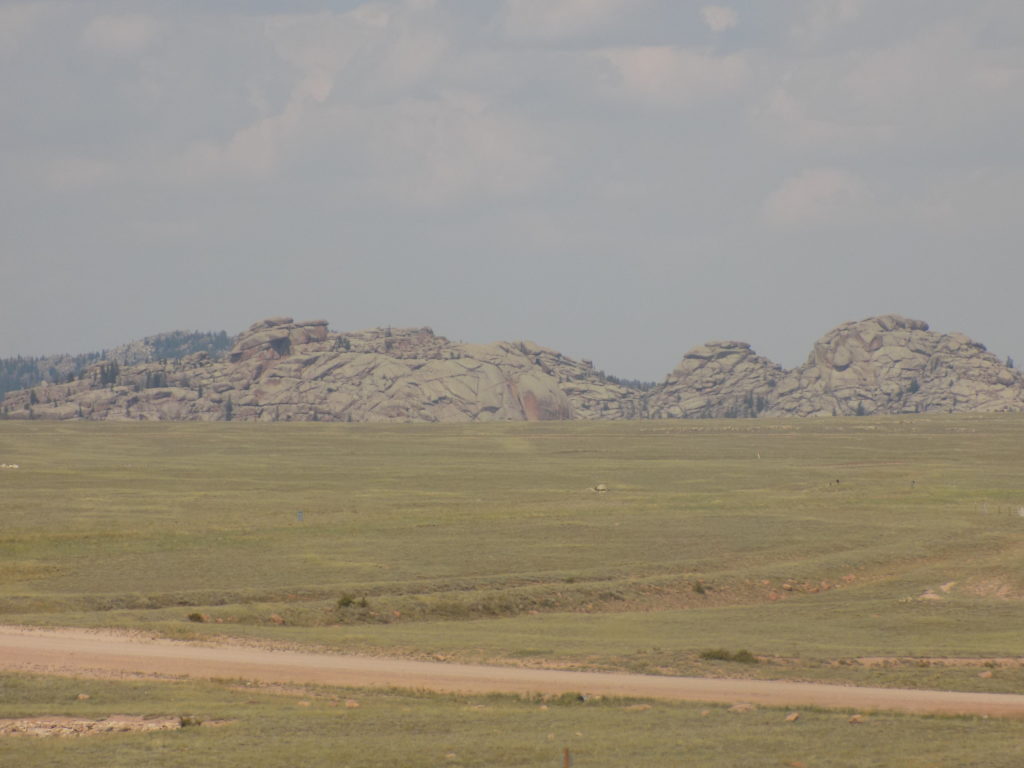The photo below provides the TL;DR summary of the reason for my visit to Buford. If you’re interested in learning more, read on.
Population one, perhaps.
Let’s begin with a few other interesting Buford facts. It’s population peaked at about 2,000 in the early 20th century. Although it still has a zip code, the town’s post office closed in 2004. In 1992, a chap named Don Sammons who had lived there since 1980 purchased the entire town. He lived there with his wife and son but his wife died in 1995 and his son moved away soon thereafter making Don the town’s only resident. Sometime between 2007 and 2011, the population swelled to seven but the other residents quickly moved away again leaving Sammons as the sole soul in the town.
Wanting to be closer to his son, Sammons moved away in 2012 and put the town up for auction. It was purchased by two Vietnamese men one of whom is named Phạm Đình Nguyên. They opened a convenience store named Phin Deli for the coffee they import from Vietnam. The day of my visit, it looked like this.
Apparently, the store and gas station plus a mobile home that sits somewhere on the 25 or so acres of what the Vietnamese unofficially renamed Phin Deli Town Buford comprise the entire burg. Although there were a couple of vehicles and some men hanging out on the day of my visit, the store was closed and I had one person tell me that the town is, once again, for sale. So, if you’re interested…
Rock Tree, Rock.
I reached stop number three in even less time than it took me to get from stop one to stop two. Two miles or so west of the Buford exit, in the median of the interstate sits this unusual sight.
It might be hard to imagine but this lone, understandably bent and twisted limber pine tree (a species common to the area) that appears to be growing out of the 1,400,000,000 year-old pre-Cambrian granite rock has been something of an attraction since at least the 19th century. The age of the tree hasn’t been determined but it first came to the attention of European Americans who were working on the construction of the transcontinental railroad. It’s said that the rail workers for the Union Pacific diverted the tracks so they would pass close to the tree without disturbing or uprooting it.
Before 1901 when the railroad tracks were moved a mile or more to the south of their original location, the firemen from passing locomotives would stop to “give the tree a drink” from their water buckets. From 1901 to sometime in the subsequent decade the abandoned rail grade became a wagon trail and so remained in use. When planning for the Lincoln Highway – “a continuous improved highway from the Atlantic to the Pacific” began in 1913, the old wagon trail was incorporated into the highway and the completed road passed by the little tree.
Improvements to the road continued through the 1920’s when it became U S Route 30 and ultimately into the 1970s with the construction of I-80. Despite nearing the 8,835-foot Summit Peak, – the highest point on I-80 – and having views like this,
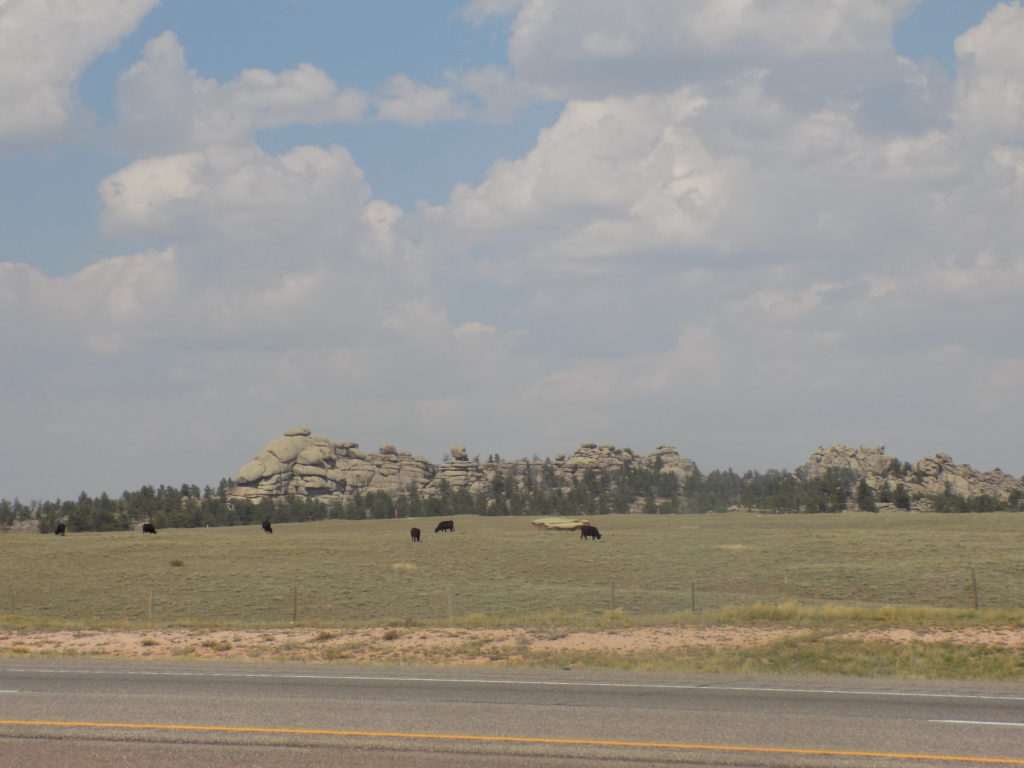 of the nearby Sherman Mountains, the little tree has remained a favorite stop for photos. Today, you can safely pull off the road and visit the tree if you’re prepared by being in the left lane as you approach Exit 335 from the east. (There’s a spot approaching from the west as well but I can’t provide a marker. I suspect it’s just past Exit 335.)
of the nearby Sherman Mountains, the little tree has remained a favorite stop for photos. Today, you can safely pull off the road and visit the tree if you’re prepared by being in the left lane as you approach Exit 335 from the east. (There’s a spot approaching from the west as well but I can’t provide a marker. I suspect it’s just past Exit 335.)
The Sherman Mountains are interesting in and of themselves. These erosional rock forms remnants rising above the general surface of the Laramie Range are shaped by three sets of joints. Also known as planes of weakness, joints cut the granite and divide it into large blocks. Weathering has rounded the edges and enlarged the joints.
These rocks are part of the Vedauwaoo Rock Formation and can be seen close-up in the nearby Medicine Bow – Routt National Forest. (Vedauwoo is believed to have its etymology from the Arapaho word bito’o’wu meaning earth or earth born.) Although the rocks themselves are 1,400,000,000 years old (more than one billion years older than the Tetons which I’ll visit in a few days) they were exposed to the surface with the Laramide Orogeny of about 70 million years ago and which I discussed in the Bing, Banff, Boom post).
The rocks in the photo above are likely part of the Permian age Fountain Formation that geologically arose about 300 million years ago when desert sand dunes interacted with the waters of a shallow continental sea – probably the Western Interior Seaway I wrote about in the post on Banff (but I didn’t do any research to confirm this). This created areas of cross stratification so that some of the rocks have fossils of sea urchins, sea lilies, and snails. Most of the photos from this stretch are already in this post but any I might have omitted are in this album.
See the pyramid along the plain.
Once again, I didn’t have to drive very far – just six miles – to reach the exit for my next stop – the Ames Brothers Pyramid. So, are you wondering who were the Ames Brothers and why do they have a pyramid shaped monument to them standing in an otherwise open plain between Cheyenne and Laramie? Before I looked into it, I know I did.
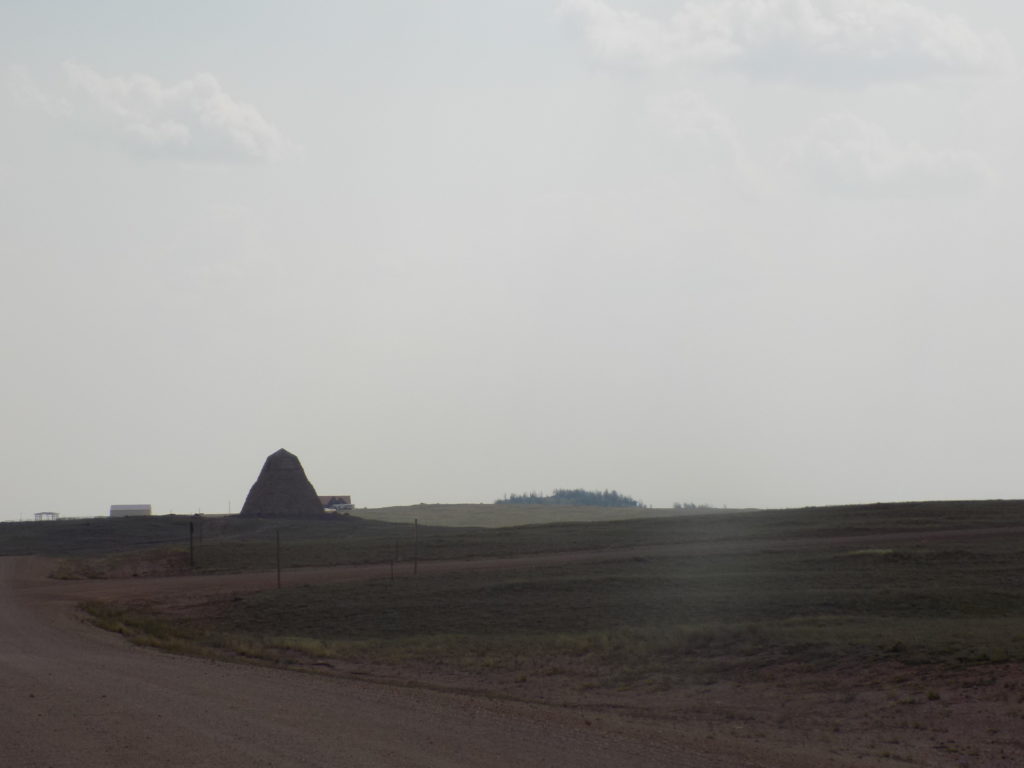 (I used this picture because I want you to see the gray haze that I repeatedly mention.)
(I used this picture because I want you to see the gray haze that I repeatedly mention.)
Oakes and Oliver Ames were born in Massachusetts in the early 19th century. As a pair of enterprising young men, they amassed a small fortune selling axes and shovels to California gold seekers. They continued to build their fortune selling the same equipment to the Army during the Civil War. Oakes won election to Congress where he represented Massachusetts’ second district from 1863 – 1873. Three years his junior, Oliver won a seat on the board of directors of the Union Pacific Railroad.
After Oakes learned of Lincoln’s desire to build a transcontinental railroad, he used his political influence to oust the Union Pacific’s then current chairman and have Oliver installed as president. Eventually, Credit Mobilier (essentially a shell corporation set up by the Union Pacific board) won the construction rights to build much of the proposed rail line that was then completed under Oliver’s aegis and Oakes’ political foresight and influence.
To this point in the story, it seems there’s some sense that the pair deserved some sort of recognition if not quite so ostentatious a memorial. But the plot still holds a few twists. The main one is that an investigation in 1873 revealed that, under the guise of paying Credit Mobilier, the Union Pacific Railroad over billed the government by something on the order of 44 million dollars. Oakes was censured by the Congress and died in disgrace in 1873. Oliver, who stayed on as president of Credit Mobilier, died in 1877.
Still, with Oliver still at the helm, the Union Pacific thought it necessary to honor the Ames brothers for their role in the completion of the transcontinental railroad. (I’d guess that restoring his reputation and that of his brother might also have provided some of Oliver’s motivation but that might simply be my cynical side emerging.) Oliver hired noted architect H H Richardson, whom the brothers had used for some other projects in Massachusetts, to design and build the monument. Richardson, in turn, hired noted sculptor Augustus Saint-Gaudens to sculpt the two nine foot high bas-relief sculptures of the brothers with Oakes facing east and Oliver facing west.
Richardson used granite hewed from Reed’s Rock about a half mile west of the site and planned it to reflect the surrounding landscape. And, he did an admirable job.
After the monument was completed, the railroad built a small town nearby so riders could stop and admire, or in some cases, photograph the memorial. However, you might recall that in 1901 the Railroad moved the grade several miles to the south. Without the railroad stop, the town died a fairly quick death. But the monument itself, reachable only by a ride of several miles along a dirt road and donated to the state of Wyoming in 1983, remains.
